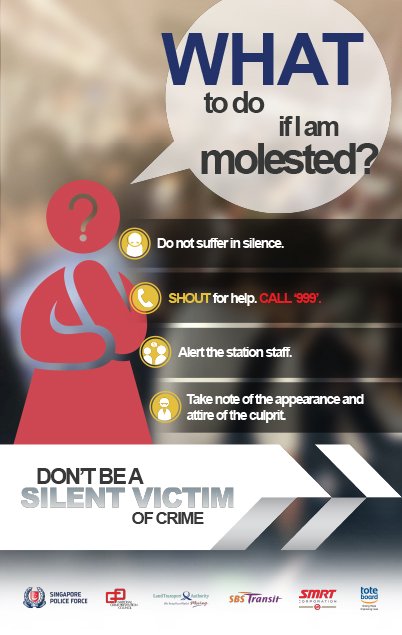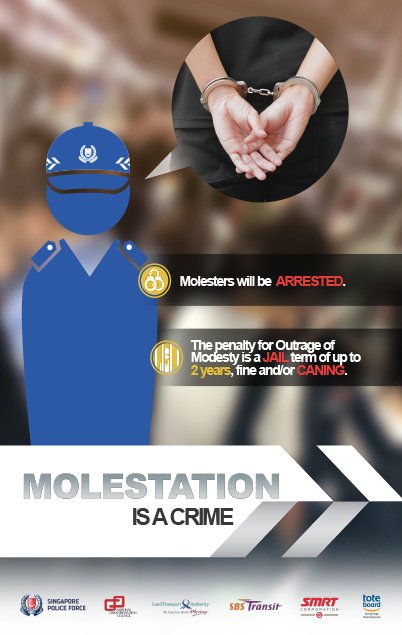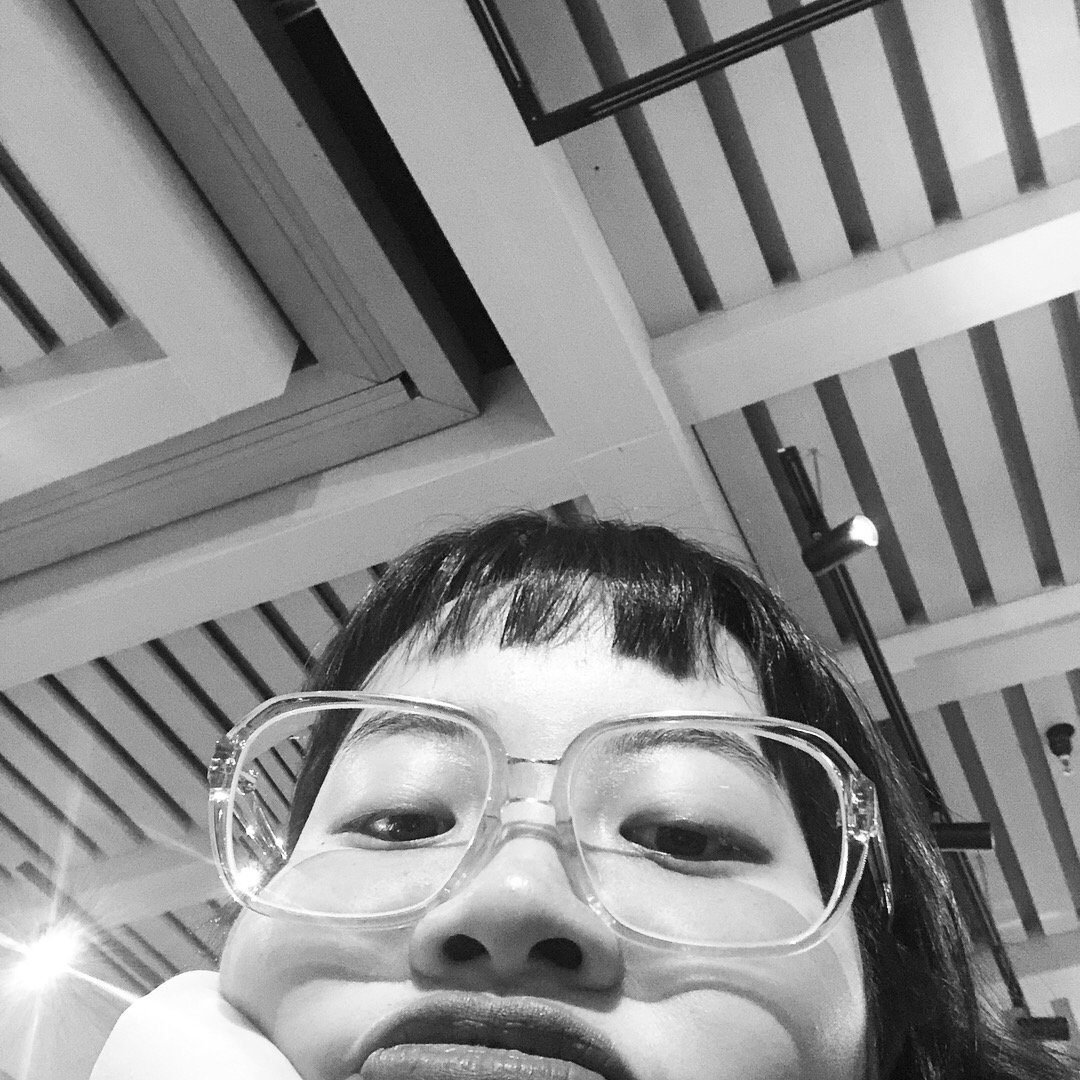Exploratory Research
Exploring the What, Why, Who, and How.
What are some of the current issues confronting our world today? Amongst them, what is of interest and a cause of concern to you?
Outrage of Modesty
The term “Outrage of modesty” is a formal term used to describe the act of molestation. Such acts can happen anywhere, at any time and to anyone.
Unfortunately, such acts have been on the rise in Singapore, most notably on our public transport system, and in nightlife hotspots. According to the Mid-Year Crime Statistics for January to June 2018 by the Singapore Police Force (SPF), there is a 37% increase in the number of outrage of modesty cases at public entertainment nightspots, whilst cases occurring on public transport went up by 43.8%.
Although it is not their fault, victims are often afraid to report such cases, thus allowing the preparator to continue their actions and affecting others.
Links
https://www.straitstimes.com/singapore/courts-crime/overall-crime-down-but-reports-of-molest-on-public-transport-up-60-per-cent
https://www.straitstimes.com/tags/outrage-of-modestyinsulting-modesty?page=1
https://www.straitstimes.com/singapore/courts-crime/molestation-and-scam-incidents-on-the-rise
https://www.police.gov.sg/~/media/20180823_stats_mid_year_2018_crime_statistics_stats.pdf
Creating Public Spaces
Public spaces are crucial to cities, they provide an opportunity for people to come together. Successful public spaces are inclusive of the diverse groups of people and create a social space that everyone can participate in. However, cities often neglect public spaces.
Singapore has been constantly making efforts to create such spaces, such as neighbourhood playgrounds for the young and community centres that cater heavily to the elderly. However, there aren’t many of these spaces created for youths and young adults. This has often resulted in them spending at overly prices cafes for a space to chill and socialise.
Links
https://www.ricemedia.co/current-affairs-features-public-spaces-singapore/
https://www.clc.gov.sg/docs/default-source/urban-solutions/urban-solutions-11-full.pdf
https://www.ura.gov.sg/Corporate/Get-Involved/Enliven-Public-Spaces
Phones at the Table
We are all slaves to our mobile devices. They have become an integral part of our lives whether we like it or not. You probably already know this, but using your mobile devices at the table during mealtime is not a good idea. Not only does it make the others at the table unhappy and rather annoyed, research has shown that it could also negatively affect your enjoyment.
Using our phones at the table reduces the interactions with our loved ones. Although you may be engaging face-to-face at the table, using the phones make one more distracted. Distraction among phone users also meant higher levels of boredom and a worse overall mood, according to the study.
Links
https://www.straitstimes.com/world/americas/dont-use-your-phones-during-mealtimes-or-risk-your-own-enjoyment-says-new-study
https://www.straitstimes.com/singapore/fastfood-chain-asks-diners-to-put-away-phones-during-meals-echoing-past-efforts-elsewhere
https://time.com/5178352/phone-ruining-dinner/
https://gen.medium.com/please-god-no-phones-at-the-table-282f7b9ba360
Current Affairs
More than 70% of teenagers in Singapore hardly or never read, watch or listen to the news. One in three of them are not even interested or curious about the current affairs going about in the world. Furthermore, teens who do involve themselves with the news often get their information and facts from social media. A recent survey has shown that those who get the news from social media platforms are less informed of current affairs as compared to traditional news outlets.
As future leaders of Singapore, it is important that they keep themselves updated to news and regional developments.
Links
https://www.straitstimes.com/singapore/youths-who-prefer-social-media-for-news-less-informed-of-current-affairs
https://www.todayonline.com/commentary/gen-y-speaks-talk-about-current-affairs
https://repository.ntu.edu.sg/handle/10356/66925
Why is the issue important? Who does it affect and how?
Out of the topics that I have mentioned above, the one that speaks to me most is the alarming rate of outrage of modesty taking place in our country. Every day as I take the train to school, I notice many adverts in the train station about molestation cases. However, despite the increased warnings, it still happens. This issue can affect anyone at literally anywhere, men or women, young or old. Everyone has the right to feel safe in common public areas.
Singapore is supposedly a safe country with one of the lowest crime rates country. However, as the rate of outrage of modesty cases rises, even places like public transportations or even the void decks of our own homes can start turning into threatening places.
Who do you need to communicate to and why?
This issue has to be communicated to the victims as well as potential victims, for them to not only know how to deal with such situations but also the importance of stepping forward and making the preparator pay for their actions.
Although cases of outrage of modesty can happen to anyone, a highly targeted group would have to be young women ageing from 20 to 40.
Victims need to feel confident and know their rights to stand up for themselves and others.
Links
https://www.straitstimes.com/singapore/molest-victims-arent-just-speaking-up-they-are-fighting-back
https://www.straitstimes.com/singapore/courts-crime/more-molestation-victims-speaking-up
How was visual communication contributed to address the cause?
1. National Crime Prevention Council Campaign


This was a campaign initiated by the National Crime Prevention Council with support of the Singapore Police forces. The campaign aimed to create a sense of awarness amongst public transport users on the cases of molestation. TVCs that featured women getting molested on the public transport showed how one should react in such a scenario. Similarly the print advertising plastered on various train stations and bus stops aimed to educate readers on how molestation is a serious crime and how one should react when faced with such a scenario.
https://www.ncpc.org.sg/campaigns.html#molest
2. Smart Clubbing Campaign

The “Smart Clubbing” campaign is another initiative by the National Crime Prevention Council that feature mediacorp artist Irene Ang in a her comedic Singaporean slang as she gives out tips on clubbing smartly in Singapore. The campaign uses an informative video to raise awarness about the rise in outrage of modesty cases in nightclubs and how one can avoid, prevent and get help when faced with such cases.
https://www.ncpc.org.sg/events_20180905_smart_clubbing_campaign.html
https://www.straitstimes.com/singapore/police-launches-smart-clubbing-campaign-to-fight-common-crimes-at-night-spots
3. #MeToo Movement


The #MeToo Movement is a movement against sexual harassment and sexual assault. The #MeToo hashtag is a global movement where victims of sexual assult share their stories for others to learn from and gain awareness.
The #MeToo movement has a website was created for two purposes. One as a safe space for healing and another to advocate the cause. The website has a comprehensive database consisting of local and national organizations dedicated to providing services and safe spaces for survivors of sexual violence, healing stories, as well as articles and a glossary of terms to help give voice to victim’s experiences. The website aims to empower victims by letting them know that they are not alone.
https://metoomvmt.org
https://www.nytimes.com/series/metoo-moment
https://www.theguardian.com/world/metoo-movement





